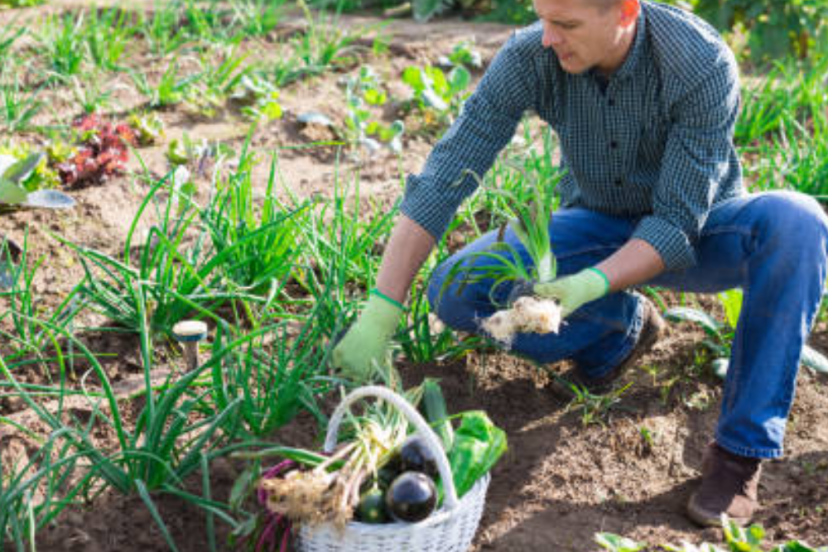Culinary Herb Foraging in Your Own Backyard
In the quest for fresh, flavorful ingredients, culinary enthusiasts often turn to farmer’s markets, specialty stores, or their local grocery stores. However, a hidden treasure trove of culinary delights may be closer than you think—right in your own backyard. The practice of culinary herb foraging in one’s backyard is a rewarding and sustainable way to elevate your culinary creations. In this article, we’ll explore the lesser-known herbs that may be growing in your own outdoor space, unlocking a world of unique flavors that can transform your home-cooked meals.
Dandelion Greens: Beyond the Weed
- Dandelions are often dismissed as pesky weeds, but their vibrant green leaves are a nutritious addition to your culinary repertoire. Packed with vitamins A and C, iron, and calcium, dandelion greens offer a slightly bitter flavor profile reminiscent of arugula. Use them in salads or sauté them with garlic for a delicious side dish. Dandelion greens are not only a free and abundant resource but also a nutritional powerhouse.
Pineapple Sage: A Sweet Surprise
- Known for its aromatic leaves and striking red flowers, pineapple sage is a herb that adds a touch of sweetness to both savory and sweet dishes. The leaves carry a pineapple-like fragrance, making them a delightful addition to fruit salads, desserts, and even cocktails. Imagine infusing your summer lemonades with the essence of pineapple sage, creating a refreshing and unique beverage that will impress your guests.
Wood Sorrel: Nature’s Lemonade
- Wood sorrel, often mistaken for clover due to its three-heart-shaped leaflets, is a lemony herb with a citrusy kick. Perfect for those who enjoy a tangy twist in their dishes, wood sorrel can be used to enhance salads, sauces, and even desserts. Beyond its culinary appeal, wood sorrel has been used in traditional medicine for its potential health benefits, making it a versatile and functional addition to your backyard foraging repertoire.
Bee Balm: The Monarda Marvel
- Bee balm, also known as wild bergamot or Monarda, is a herbaceous plant with a distinct aroma reminiscent of citrus and mint. Traditionally used by Native American tribes for medicinal purposes, bee balm’s leaves and flowers can impart a unique flavor to both sweet and savory dishes. Try using bee balm in teas, jams, or as a garnish for desserts to experience its delightful blend of citrus and mint notes.
Lovage: The Underrated Umami Boost
- Lovage, with its large, dark green leaves and celery-like flavor, is an herb that deserves more attention in the culinary world. Often overshadowed by its more popular relatives like parsley and celery, lovage can be used to add depth and umami to soups, stews, and savory dishes. The leaves and stems are edible, and the plant’s robust flavor can be a game-changer in dishes where you might typically reach for parsley or celery.
Sweet Cicely: Anise-like Elegance
- Sweet cicely is an often-overlooked herb with delicate fern-like leaves and a subtle anise flavor. This herb pairs well with both sweet and savory dishes, offering a gentle licorice undertone. Use sweet cicely to infuse simple syrups, flavor ice creams, or elevate your fruit salads. Its versatility and unique flavor profile make it a standout choice for those looking to experiment with unconventional herbs in their culinary creations.
Chervil: The Tarragon Alternative
- Chervil, sometimes referred to as French parsley, boasts a delicate, anise-like flavor that is reminiscent of tarragon. Often used in French cuisine, chervil can be an excellent substitute for tarragon in dishes where a milder flavor is desired. Add chervil to salads, omelets, or sprinkle it over roasted vegetables to impart a touch of finesse to your meals. This underappreciated herb is easy to grow and can thrive in both garden beds and containers.
Sorrel: Tangy Elegance
- Sorrel is a perennial herb with bright green, arrow-shaped leaves that pack a tangy punch. The flavor of sorrel is often compared to lemon or green apple, making it a versatile addition to salads, sauces, and soups. Sorrel is a traditional ingredient in French cuisine, where it is used to add brightness and acidity to various dishes. Grow sorrel in your backyard, and you’ll have a zesty herb at your disposal to elevate the flavor profile of your favorite recipes.
Conclusion:
Embarking on a journey of culinary herb foraging in your backyard can be a delightful adventure, unveiling a world of unique flavors and aromas. From the unexpected sweetness of pineapple sage to the umami richness of lovage, these lesser-known herbs have the potential to transform your home-cooked meals into gourmet experiences. Embrace the diversity growing in your own outdoor space, and let your culinary creativity flourish with the hidden treasures that nature provides.

